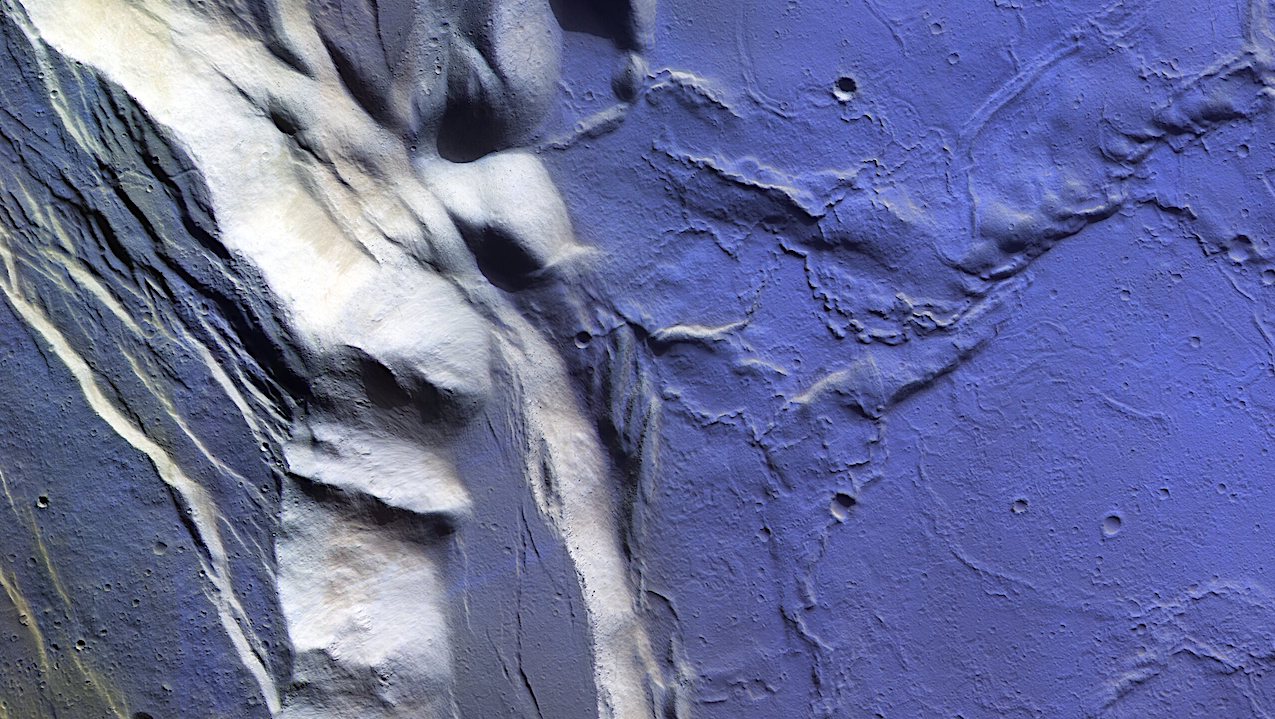
This rectangular slice of Mars shows the topography of Mars’ Olympus Mons volcano. Rippled, uneven, stepped terrain can be seen with different lighting. The right side of the image is blue, representing newly discovered water ice. — Credits: ESA/TGO/CaSSIS; CC BY-SA 3.0 IGO Big picture
This high-resolution image shows newly discovered frost on the summit of Olympus Mons, the tallest volcano not only on Mars, but in the entire Solar System. Snow appears blue on the floor of the volcano’s caldera (summit crater) and around its northern rim. It is absent from the well-lit steep slopes seen to the left of this image.
This frost was recently discovered by ESA’s ExoMars and Mars Express missions. The researchers found frost not only on Olympus Mons but also on the other Tharsis volcanoes of Arcia Mons, Askreus Mons and Serranius Tholus. This is the first time that water ice has been found near the Martian equator, a region of the planet where ice was thought to be unlikely.
The terrain on the right side of the image is filled with compression ridges within the caldera, while the ripple structures in the center-left are collapsed caldera rim terraces.
The image is false color, meaning the colors shown here are not what the human eye can see. This is because the CaSSIS instrument on the ExoMars Trace Gas Orbiter is sensitive to infrared light (invisible to our eyes), and the image is contrasted and stretched to better show the details of the landscape. Water ice appears blue in this false color image. False color images are very useful for scientists, revealing more information than the human eye can see. Read more about how CaSSIS produces its blue images, and how it allows us to explore the Red Planet.
Image resolution is 4.5 m/pixel, and local solar time is 7:11 AM.
Astronomy

„Oddany rozwiązywacz problemów. Przyjazny hipsterom praktykant bekonu. Miłośnik kawy. Nieuleczalny introwertyk. Student.

